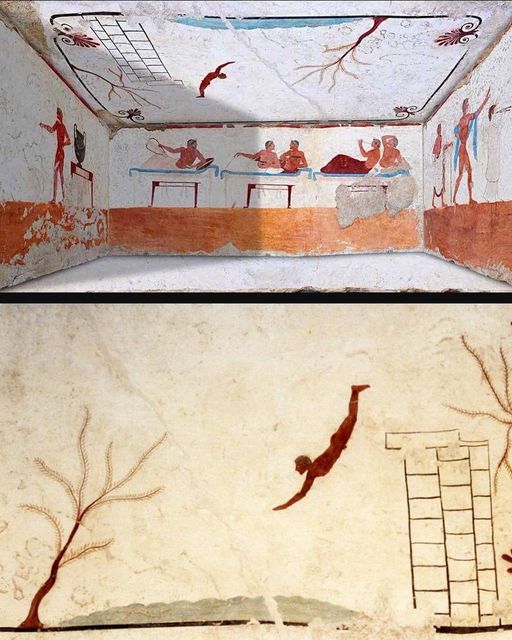
The fresco is from the “Tomb of the Diver,” discovered in the ancient Greek city of Paestum, Italy. This tomb, dating back to around the 5th century BC, is famous for its vibrant and well-preserved frescoes, including the depiction of a young man diving into waves.
The fresco featuring the young man jumping into curvy waves is considered symbolic, possibly representing a journey into the afterlife. The imagery of the diver could have had ritualistic or philosophical significance, possibly connected to Greek views of death, the soul, or rebirth.
The tomb itself is unique because of its well-preserved, expansive decoration. Unlike most Greek tombs of the period, which were often decorated with simpler designs, the Tomb of the Diver presents a rich narrative and is considered one of the few examples of Greek funerary art to include such complex, detailed imagery.
The specific scene of the diver is interpreted as either a symbolic depiction of the soul’s transition to the afterlife, or it may represent a more philosophical notion of death and rebirth. The waves themselves, along with the figure diving into them, may also have symbolic connections to the elemental forces of nature or the concept of cleansing and transformation. The fresco is also remarkable for its use of vivid color and the apparent influence of both Greek and Etruscan artistic traditions.